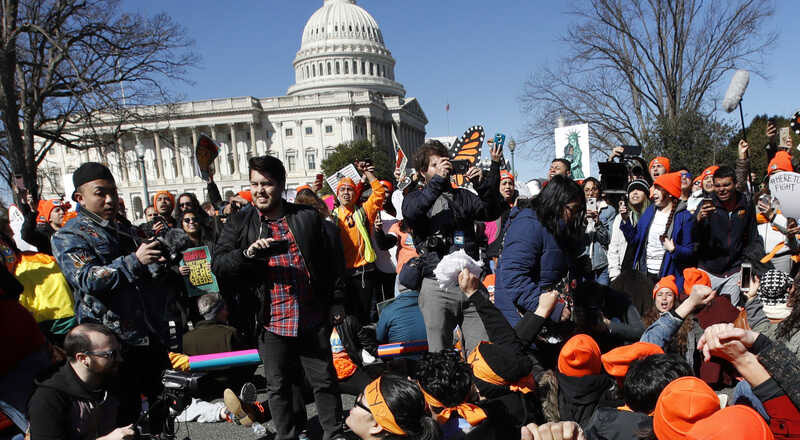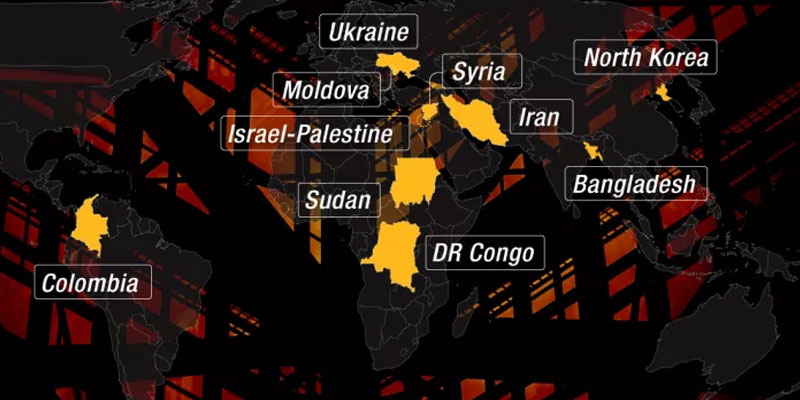Trump’s Legacy of Harsh Immigration Enforcement
The United States’ immigration landscape has long been shaped by contrasting ideologies. President Donald Trump’s administration took a stringent approach to illegal immigration, aiming to curb undocumented arrivals and enforce rigid deportation policies. From the construction of a border wall to strict asylum restrictions, his tenure saw the rise of aggressive enforcement strategies designed to deter unauthorized migration.
One of the most controversial tools under Trump was the push for “self-deportation”—a tactic where life is made so difficult for undocumented or temporarily authorized immigrants that they choose to leave voluntarily. This strategy appears to be making a dramatic comeback, even as the Biden administration had earlier attempted to soften immigration policy through temporary humanitarian programs and digital pathways like the CBP One app.
Now, in a startling move, the Trump administration—through ongoing influence in federal enforcement and judicial backing—has taken a more sinister turn: over 6,000 living immigrants in the U.S. have been classified as “dead,” stripping them of their legal ability to live, work, or access basic services in the country.
The Core of the Policy: Cancelling Social Security to Disable Immigrant Lives
The heart of the new action lies in the deliberate cancellation of social security numbers (SSNs) belonging to immigrants—primarily those who entered the U.S. during Joe Biden’s presidency under lawful, temporary provisions. These unique nine-digit identifiers are vital for employment, financial services, tax payments, and accessing social benefits.
By labeling these individuals as deceased in federal records, the government is rendering their SSNs invalid. Without this identification, immigrants cannot legally work, open bank accounts, or access public services. Essentially, the action strips away their functional existence in American society, nudging them toward a forced decision: leave voluntarily or face civil and legal consequences.
The policy appears heavily focused on dismantling the Biden-era immigration pathways, particularly targeting those who entered via humanitarian parole or digital application systems such as the CBP One app—used by over 900,000 migrants to schedule asylum appointments at border ports of entry.
Legal Backing and Federal Enforcement: The Green Light to Register or Leave
Adding to the gravity of the situation, a recent federal court ruling upheld a Trump-era policy requiring all undocumented immigrants in the U.S. to register with federal authorities and carry identification at all times. The Department of Homeland Security (DHS) quickly moved to implement this directive, issuing a February 25 announcement that immigrants must self-register within 30 days or face fines and potential prosecution.
DHS officials underscored that enforcement would be carried out fully, and those failing to comply could be penalized or even fast-tracked for removal. The combination of court support and executive momentum has reinvigorated Trump’s broader strategy to make life untenable for unauthorized immigrants without initiating mass physical deportations.
A Strategy of Self-Deportation: Quietly Forcing Exit Through Bureaucratic Isolation
This maneuver isn’t just a one-off bureaucratic glitch—it’s a systemic strategy. By eliminating the ability to function economically and socially, the Trump administration aims to push immigrants toward self-deportation. Advocates warn this policy amounts to “administrative erasure”—a method of forcing people out of the country not through arrests, but by making their continued presence impossible.
For those affected, this includes being shut out of the workforce, unable to rent housing, open bank accounts, or access healthcare. Many of these immigrants were initially allowed into the U.S. under humanitarian considerations, often fleeing conflict or disaster, and are now being criminalized without due process.
Civil rights groups have already begun filing appeals and mobilizing support for the affected individuals. However, the broader message from the administration is clear: only those deemed “permanent” or “desirable” by current policy standards will be allowed to remain.
The Bigger Picture: What This Means for U.S. Immigration’s Future
As the U.S. heads into another election cycle, the resurgence of Trump-style immigration enforcement foreshadows deeper polarization and potential shifts in national identity. If this strategy continues unchecked, it may dismantle humanitarian pathways that were established to create legal order and offer refuge to vulnerable populations.
The reclassification of over 6,000 immigrants as “dead” is not just a clerical move—it’s a calculated act of exclusion. It represents a return to aggressive immigration policy cloaked in administrative action, avoiding the political optics of mass deportations while still achieving the same goal.
With growing judicial support and federal cooperation, this model could be replicated at scale, affecting hundreds of thousands more. The stakes are immense—not just for immigrants, but for America’s identity as a nation of opportunity and refuge.
A Crossroads for Immigration Justice
The Trump administration’s latest maneuver exemplifies a shift from overt deportation to bureaucratic coercion. This emerging form of “paper deportation”—where individuals are erased from systems rather than borders—raises urgent questions about due process, human rights, and the future of immigration policy in the U.S.
As legal battles intensify and the 2024 presidential race heats up, the country finds itself at a crossroads. Will America continue down a path of exclusion and systemic erasure, or reclaim its legacy as a nation that protects the vulnerable and values fairness under the law?
The answer may well determine the fate of millions living in the shadows of policies that decide not only where they can live—but whether they are counted among the living at all.
(With agency inputs)





